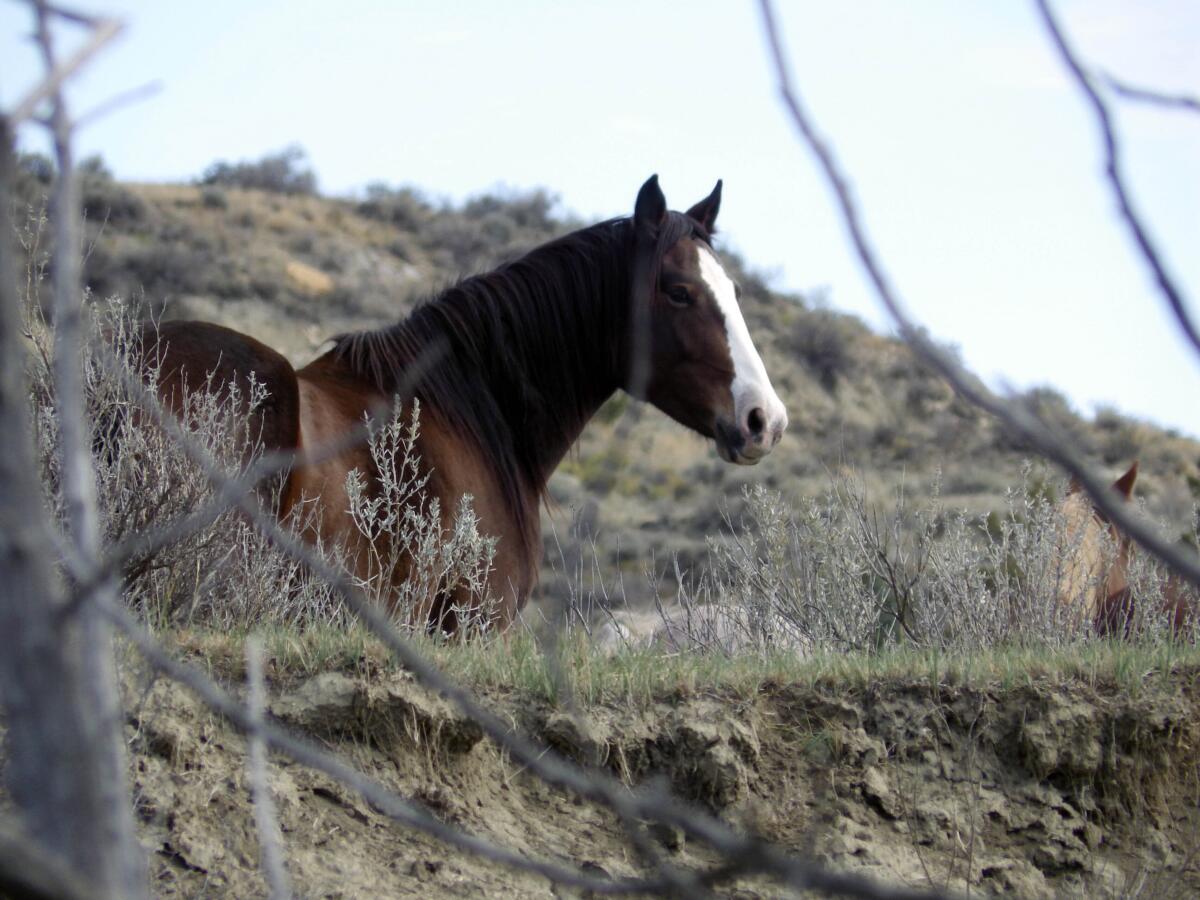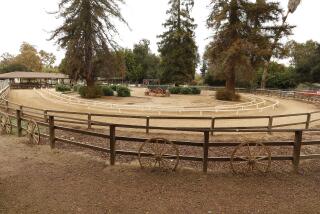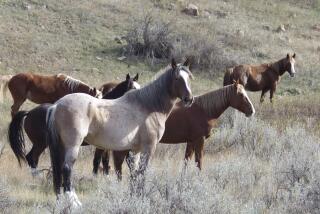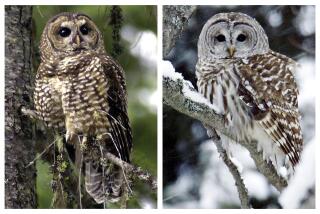Decision on the future of wild horses in a North Dakota national park expected next year

BISMARCK, N.D. â About 200 wild horses roam free in a western North Dakota national park, but that number could shrink as the National Park Service is expected to decide next year whether it will eliminate that population.
Advocates fear a predetermined outcome that will remove the beloved animals from Theodore Roosevelt National Park. An extended public comment period ends Friday on the recent environmental assessment of the parkâs three proposals: reduce the horse population quickly, reduce it gradually or take no immediate action.
The horses have some powerful allies â including North Dakota Gov. Doug Burgum and U.S. Sen. John Hoeven, both Republicans â while advocates are pulling out all the stops to see that the animals stay. Park officials say they want to hear from the public.
The horses are popular with visitors, who often see and photograph them along the parkâs scenic road and hiking trails through the rugged Badlands.
Evaluating whether the horses belong in the park has âbeen a long time in coming, and it realigns us with our overarching policies to remove nonnative species from parks whenever they pose a potential risk to resources,â said Jenny Powers, a veterinarian who leads the wildlife health program for the National Park Service.
Dozens of wild horses that some assert are descended from Sitting Bullâs war ponies are to be captured this fall at Theodore Roosevelt National Park in western North Dakota.
âThis isnât an easy decision for us, but it is one that is directly called for by our mission and mandates,â she told the Associated Press last month.
One of the horsesâ biggest advocates fears park officials have already decided to oust the horses. Chris Kman, president of Chasing Horses Wild Horse Advocates, cited several alternatives for keeping horses that park officials considered but dismissed in the recent environmental assessment.
In the document, the Park Service said those alternatives wouldnât be âin alignment with NPS priorities to maintain the native prairie ecosystemâ and wouldnât address the animalsâ impact.
Kman said she is âoptimistic that we will ultimately win this fight. I donât have any faith that the park will do the right thing and keep the horses in the park.â
Even if the horses ultimately stay, park Supt. Angie Richman said they would have to be reduced to 35 to 60 animals under a 1978 environmental assessment. The process is part of the parkâs proposed management plan for âlivestock,â a term the horsesâ allies reject.
Wild horse preserves proposed for Midwest and East
Wild horses were accidentally fenced into the park in its early years. They were eventually kept as a historic demonstration herd after years of efforts to eradicate them, said Castle McLaughlin, who researched the horsesâ history in the 1980s as a graduate student working for the park service in North Dakota.
Wild horse advocates would like the park to conduct a wider environmental review, and they want to ultimately see a genetically viable herd of at least 150 horses maintained.
A vast majority of previous public comments opposed removal of the horses, making it âreally difficult to understand why the government would choose to take them away from the American people,â said Grace Kuhn, communications director for the American Wild Horse Campaign.
The wild horses âhave a right to be in the national parkâ and align with President Rooseveltâs sentiment to preserve cultural resources for future generations, she said.
âEssentially, the park service by implementing a plan to either eradicate them quickly or eradicate them slowly, theyâre thumbing their noses at the American public and their mission,â Kuhn said last month.
The Bureau of Land Management has suspended indefinitely its controversial wild-horse mass-adoption program that animal protection groups say results in the slaughter of thousands of mustangs rounded up on Western ranges.
Burgum in January offered state collaboration to keep the horses in the park. His office and park officials have discussed options for the horses. State management or assistance in managing the horses in the park are options North Dakota would consider; relocation is not, Mike Nowatzki, a spokesperson for the governorâs office, said Monday.
Park officials âare certainly willing to work with the governor and the state to find a good outcome,â Richman said last month, adding that the park was working with the governor on âa lot of different options.â
Hoeven has worked on negotiations with park officials, and included legislation in the U.S. Interior Departmentâs appropriations bill to preserve the horses. âIf that doesnât get it done,â he would pursue further legislation, he said last month.
âMy objective is to keep horses in the park,â he said.
The parkâs ultimate decision also will affect nine longhorn cattle in the parkâs North Unit. All of the horses are in the parkâs South Unit.
More to Read
Sign up for Essential California
The most important California stories and recommendations in your inbox every morning.
You may occasionally receive promotional content from the Los Angeles Times.










